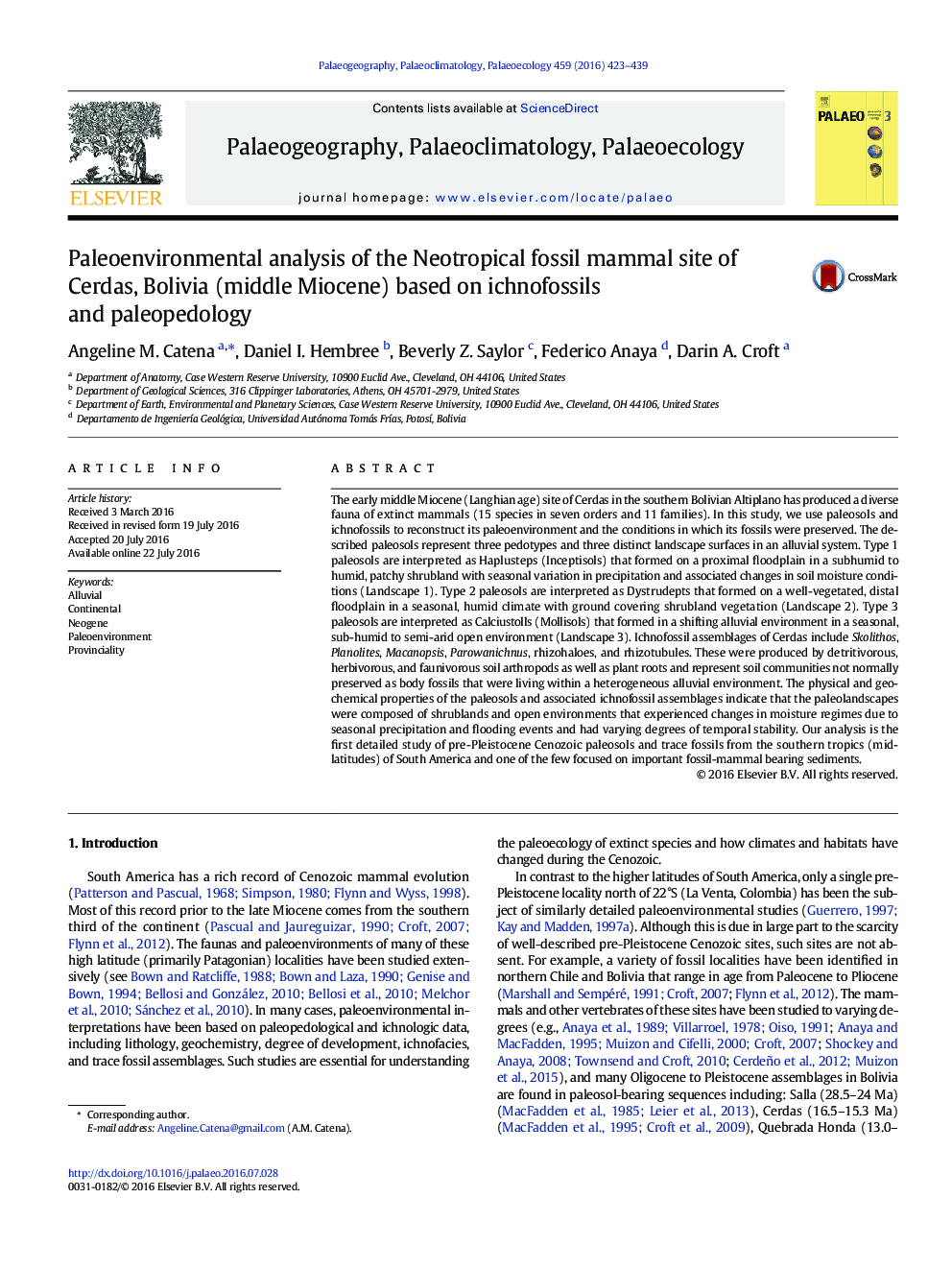| Article ID | Journal | Published Year | Pages | File Type |
|---|---|---|---|---|
| 4465646 | Palaeogeography, Palaeoclimatology, Palaeoecology | 2016 | 17 Pages |
•First detailed paleosol and ichnofossil analysis from the southern Neotropics of South America.•We identify three pedotypes (three paleolandscapes) in an alluvial environment.•Ichnofossils include Skolithos, Planolites, Macanopsis, and Parowanichnus.•We reconstruct seasonal, humid to sub-arid conditions in densely vegetated to open habitats.•Paleosols and ichnofossils of Cerdas are unlike those reported from other Neotropical, early Miocene localities.
The early middle Miocene (Langhian age) site of Cerdas in the southern Bolivian Altiplano has produced a diverse fauna of extinct mammals (15 species in seven orders and 11 families). In this study, we use paleosols and ichnofossils to reconstruct its paleoenvironment and the conditions in which its fossils were preserved. The described paleosols represent three pedotypes and three distinct landscape surfaces in an alluvial system. Type 1 paleosols are interpreted as Haplusteps (Inceptisols) that formed on a proximal floodplain in a subhumid to humid, patchy shrubland with seasonal variation in precipitation and associated changes in soil moisture conditions (Landscape 1). Type 2 paleosols are interpreted as Dystrudepts that formed on a well-vegetated, distal floodplain in a seasonal, humid climate with ground covering shrubland vegetation (Landscape 2). Type 3 paleosols are interpreted as Calciustolls (Mollisols) that formed in a shifting alluvial environment in a seasonal, sub-humid to semi-arid open environment (Landscape 3). Ichnofossil assemblages of Cerdas include Skolithos, Planolites, Macanopsis, Parowanichnus, rhizohaloes, and rhizotubules. These were produced by detritivorous, herbivorous, and faunivorous soil arthropods as well as plant roots and represent soil communities not normally preserved as body fossils that were living within a heterogeneous alluvial environment. The physical and geochemical properties of the paleosols and associated ichnofossil assemblages indicate that the paleolandscapes were composed of shrublands and open environments that experienced changes in moisture regimes due to seasonal precipitation and flooding events and had varying degrees of temporal stability. Our analysis is the first detailed study of pre-Pleistocene Cenozoic paleosols and trace fossils from the southern tropics (mid-latitudes) of South America and one of the few focused on important fossil-mammal bearing sediments.
